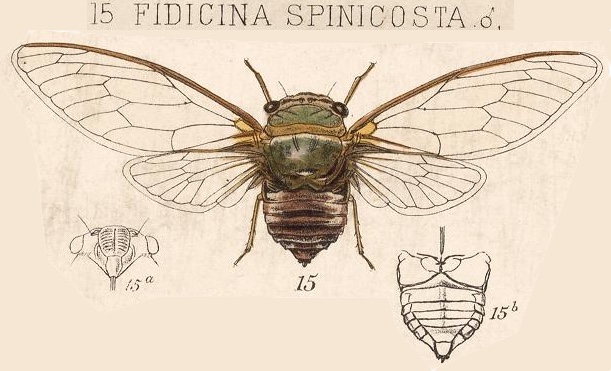Get yourself a free book about the cicadas of Brazil: Cigarras do Brasil. Visit this link and download the PDF!
The books was made by:
Vera L. Nunes
Tatiana P. Ruschel
Douglas B. H. Maccagnan
Paula C. Simões
Ruler C. Acosta
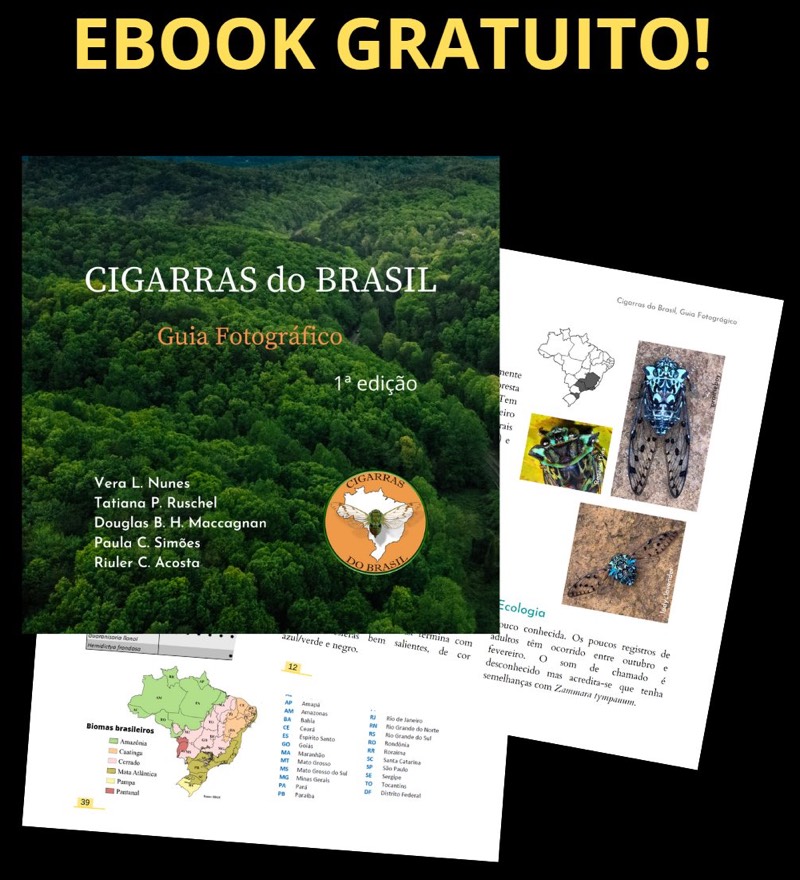
Get yourself a free book about the cicadas of Brazil: Cigarras do Brasil. Visit this link and download the PDF!
The books was made by:
Vera L. Nunes
Tatiana P. Ruschel
Douglas B. H. Maccagnan
Paula C. Simões
Ruler C. Acosta

Fidicina mannifera from Brazil, Photo by Leonardo Milhomem. 2005.
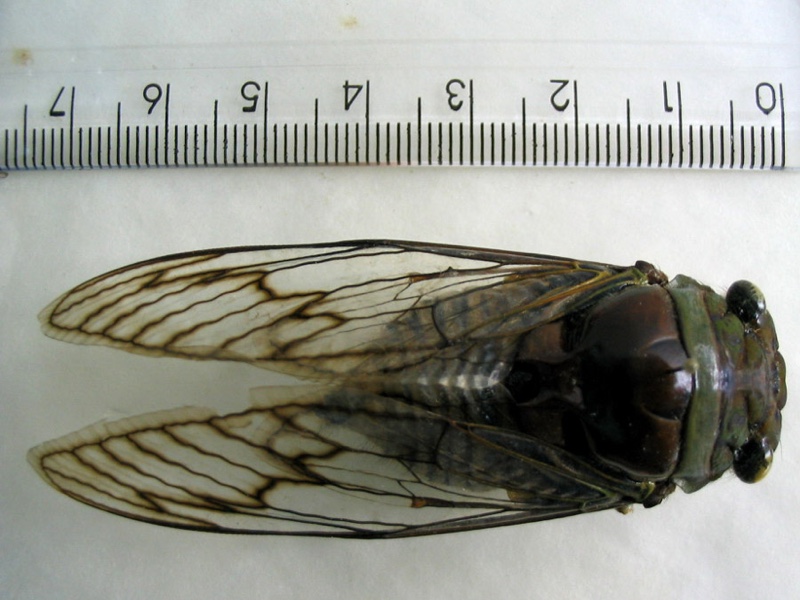
Majeorona aper from Brazil, Photo by Leonardo Milhomem. 2005.
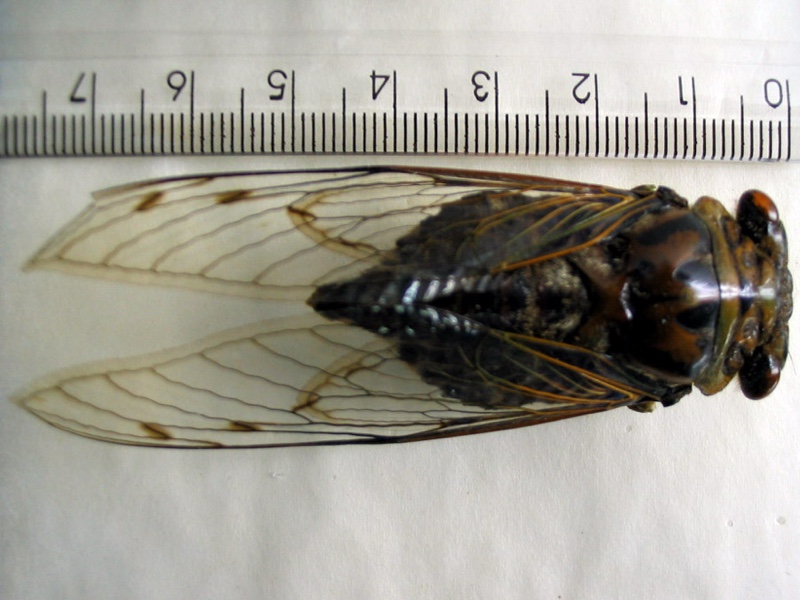
Quesada gigas from Brazil, Photo by Leonardo Milhomem. 2005.
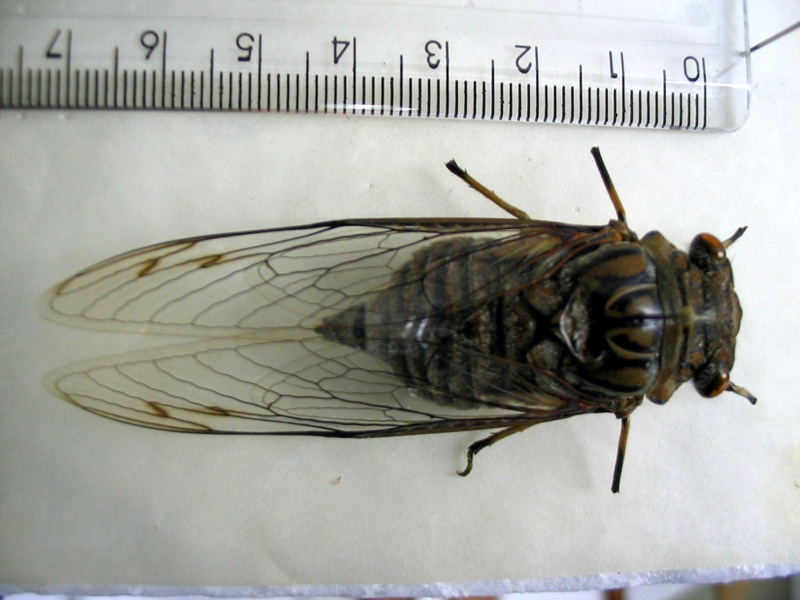
Pia Öberg from Sweden took this cicada photo back in 2004 at Hotel do Ypê in Itatiaia NP in Brazil. Thanks to Roy Troutman and cicada expert Allen Sanborn we were able to ID this pretty cicada as a Carineta diardi (Guérin-Méneville, 1829).
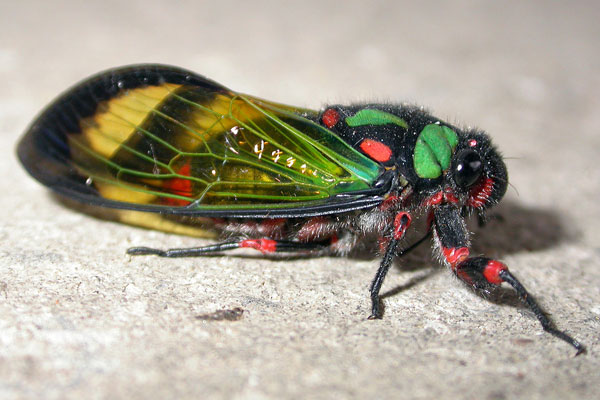
Majeorona aper (Walker, 1850) is a cicada found in Brazil, Colombia, Ecuador, French Guiana, Panama, and likely adjacent nations.
Photo by Leonardo Milhomem:

Scientific classification:
Family: Cicadidae
Subfamily: Cicadinae
Tribe: Fidicinini
SubTribe: Guyalnina
Genus: Majeorona
Species: Majeorona aper (Walker, 1850)
Fidicina mannifera mannifera is a cicada found in Brazil specifically, as well as South and Central America.
Photo by Leonardo Milhomem:

Scientific classification:
Family: Cicadidae
Subfamily: Cicadinae
Tribe: Fidicinini
SubTribe: Fidicinina
Genus: Fidicina
Species: Fidicina mannifera mannifera (Fabricius, 1803)
Quesada gigas (Olivier, 1790) Is a cicada found in the United States (Texas), Argentina, Belize, Bolivia, Brazil, Colombia, Costa Rica, Ecuador, Guatemala, Guyana, Mexico, Panama, Paraguay, Peru, Tobago, Trinidad, and Venezuela. It is the largest cicada in these locations.

Quesada gigas from Brazil, Photo by Leonardo Milhomem.
See all Quesada gigas photos and information on cicadamania.com.
Source: ©Insect Singers | Species: Q. gigas
Playlists contain multiple videos found on YouTube.
Scientific classification:
Family: Cicadidae
Subfamily: Cicadinae
Tribe: Fidicinini
Genus: Quesada
Species: Quesada gigas (Olivier, 1790)
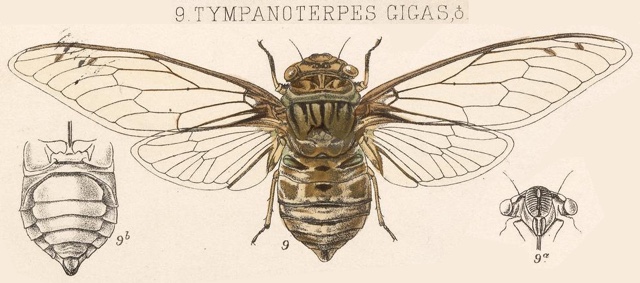
The image says Tympanoterpes gigas but its newest name is Quesada gigas.
Stal treated this species as a synonym of T. grossa, Fabr. The type of the Fabrician species, however, is in the Banksian collection contained in the British Museum, and is very distinct, the opercula being large and rounded.
The figure given in the Encyclopedic Methodique is, like Stal’s, useless for any practical purpose. Among the habitats of this wide-ranging species is that given by Walker 2, ” West coast of America,” which, as before remarked in connexion with other species, seems clearly to refer to Central America. The forms inhabiting this region (of which a Guatemalan specimen is figured) appear to be somewhat smaller than more southern specimens, or do not exhibit the gigantic specimens which are frequently and commonly received from the southern portion of the Neotropical Region.
Mr. Gervase F. Mathew (Ent. Mo. Mag. xi. p. 175) gives some interesting details relating to this insect as observed at Tobago. As regards its powers of stridulation he writes of a ” tropical afternoon: ” — ” Suddenly, from right above, you hear one or two hoarse, monotonous cries something like the croak of a tree-frog, and, looking upwards, wonder what it can be. But wait a moment ; this is merely a signal ; for the next minute everywhere above and around you these croaks are repeated in rapid and increasing succession until they merge into a long shrill whistle almost exactly similar to the whistle of a first-rate locomotive ; this continues for nearly half a minute, and then abruptly terminates.” ” Presently similar cries will be heard in the far distance, as if in reply to those which have just died away overhead. The whistling pierces one’s ears to such a degree that its vibrations can be felt long after it has ceased.”
Mr. Mathew describes this species as frequenting trees growing in ravines where the soil is generally soft and damp, in which their larvae and pupae find no difficulty in burrowing. ” When the latter are full-grown and ready for their last transformation, they emerge from the ground and crawl about four or five feet up the trunk of a tree, when they firmly fix themselves to the bark by means of their powerfully hooked fore tibiae.” ” The flight of the mature Cicada is abrupt, rapid, and by no means graceful ; and it does not appear to have the power of controlling itself when on the wing ; for I have often seen it fly in an insane manner against the trunk of a tree, a branch, or any other object that might be in its line of flight; and when it has performed its journey without any accident, it alights abruptly and awkwardly. As a rule, however, it does not attempt to fly to any great distance at a time.”
The Giant Cicada / Chicharra Grande page on the Texas Entomology websites is a very good resource, particularly in relation to the state of Texas.
This one’s a bit of a brain twister, so I’m going to dump some facts and run.
Proarna albida is a former name for two species: Proarna insignis Distant, 1881 and Proarna olivieri Metcalf, 1963.
Scientific classification down the genus:
Family: Cicadidae
Subfamily: Cicadinae
Tribe: Fidicinini
SubTribe: Guyalnina
Genus: Proarna
The image below might be either one…
Description for Proarna albida from Insecta. Rhynchota.:
This species is strikingly variable, both in size and also as regards the length of the second apical area of the tegmina. Stoll’s figure being very unsatisfactory, I have here figured a specimen from Costa Rica.
Found in: Costa Rica, Trinidad, Guyana, Suriname, and Brazil.
Description for Proarna insignis from Insecta. Rhynchota.:
Var. insignis:
Body much broader than in any varietal forms of P. albida which have passed through my hands, lateral margins of pronotum more ampliated, markings of the tegmina darker and more distinct.
Long. 24 millim., exp. tegm. 63 millim.
Three females possessing this form have passed through my hands. As I have not seen the their sex, and can find no sufficient structural character in the female of specific value, I have felt it necessary to give a varietal name for the present, to prevent confusion.
Found in NicaraPanamand Panama.
For comparison sake, P. olivieri is found in Mexico, Guatemala, Costa Rica, Venezuela, Brazil, Guyana, French Guiana, Surinam, Trinidad and Tobago, Jamaica, Cuba, Central America, South America. All over the place. From the notes within the Catalogue of the Cicadoidea (Hemiptera: Auchenorrhyncha).
Whatever the latest name for Proarna albida is, it’s a nice looking cicada:
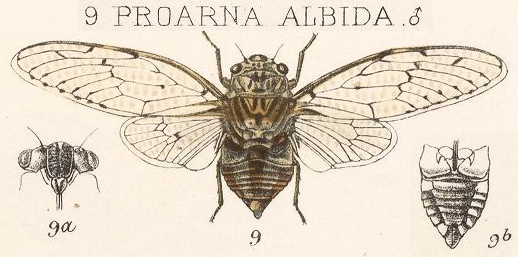
Fidicinoides spinicosta (Walker, 1850) is a cicada from Costa Rica, Panama, Guiana, French Guiana, and Brazil.
Fidicinoides spinicosta was formerly known as Fidicina spinicosta. Its name changed when it moved from the Fidicina Amyot & Audinet-Serville, 1843 genus to the Fidicinoides Boulard & Martinelli, 1996 genus.
Update (2/19/2019): this cicada is now Guyalna bicolor (Olivier, 1790). All add more info soon.
Scientific classification:
Family: Cicadidae
Subfamily: Cicadinae
Tribe: Fidicinini
SubTribe: Fidicinina
Genus: Fidicinoides
Species: Fidicinoides spinicosta (Walker, 1850)
